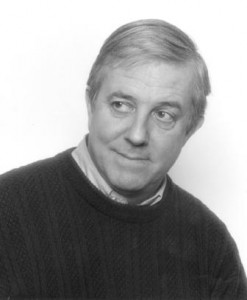Saturday
Featured StoriesPromoting a Department of Peace
When I tell Gus I’ve arranged a discussion at the Ottawa Shambhala Centre about forming a federal Department of Peace, my friend’s response is less than enthusiastic: “Great. Just what we need. Another bureaucratic sinkhole to swallow taxpayer dollars.” That’s Gus for you. He meditates, and has been my meditation student for the past several years, but he’s also a no-nonsense guy who always says exactly what he thinks. In his early forties, barrel-chested, his 6-foot-3 frame topped off by thinning red hair, Gus spent eight years in the military before leaving it to train as a physicist. He’s hardheaded, he doesn’t suffer fools gladly, and scientific logic is his religion. Even when I disagree with him I have a grudging respect for his opinion, because he’s often right.
I’m not surprised that Gus won’t come to the meeting with me, but I am surprised by the size of the crowd. I’d expected maybe a dozen wild-eyed idealists, but there are at least 50 people present — all reasonably sane-looking and including a former mayor of Ottawa. Seniors, boomers, yuppies, DINKs, loners and members of Generations X, Y and Z are all represented. Many have never before entered the Shambhala Centre.
The fellow giving the talk is Bill Bhaneja. In his sixties, slim and relaxed, he’s a retired diplomat from the Canadian Foreign Service and was until recently a senior research fellow at the University of Ottawa. He was born in India, and as a child once saw Mahatma Gandhi at one of the open-air, multifaith prayer meetings that the great man held every evening in New Delhi. Bhaneja appears earnest yet practical minded; serious, but with a glint of gentle humour in his eyes.
One of the first things he says is that the proposed Department of Peace will entail “no new money.” I’m sceptical at first: How will that work? The idea, I learn, is to draw together the many existing peace- and justice-related portfolios scattered among seven federal departments, including the obvious ones, such as CIDA (Canadian International Development Agency), Defence and Foreign Affairs, as well as Citizenship and Immigration, Health Canada, IDRC (International Development Research Center) and Justice, and combine them under a single umbrella. The reason: In none of the seven departments is peace given any kind of priority.
Without its own minister, the peace viewpoint usually goes unheard at the Cabinet level. So gathering together all the kindred spirits would give peace its own spokesperson: a senior minister. This new Cabinet member would be in a position to pursue an official mandate of peace and to offer a counterpoint to the views of other departments, such as Defence. As Bhaneja explains, “Presently, there is no such focused advice or viewpoint available inside the Cabinet to countervail the view that conflict can only be resolved through war.”
Two countries have already established Departments of Peace: the Solomon Islands and Nepal. Costa Rica is expected to announce a Department of Peace and Justice this year. Granted, these are not major players. Still, civil society organizations in 35 countries, including the United States, are actively looking at the possibility.
In early 2007, the newly elected U.S. House of Representatives reintroduced a bill to create a Peace Department. In the previous term, over 60 members of Congress had endorsed the bill. Shortly afterward, a political blitz in Washington saw 700 supporters (including luminaries such as Deepak Chopra and author Marianne Williamson) pay 220 visits to representatives and senators in support of the bill.
One fascinating aspect of the U.S. drive is that it’s nonpartisan, with supporters from all parties. The same is true in Canada. The New Democratic and Green parties support the idea in principle, and many Liberal Party MPs have expressed support or interest. Moreover, support in Canada is widespread, and growing quickly; supporters have already formed chapters in 10 major cities. On the long list of official boosters are Lloyd Axworthy, former minister of foreign affairs, and retired senator Douglas Roche, a former Canadian ambassador of disarmament and Conservative MP. Organizations that support the idea include the Council of Canadians, the Canadian Federation of University Women, the Canadian Pugwash Group, a women’s Nobel Peace Laureates organization and the United Church of Canada — the largest Protestant denomination in the country with 3 million members.  <
<
Perhaps its most unique policy element is the proposed Civilian Peace Service, a concept that goes well beyond traditional peacekeeping. For many years, Canada has been respected around the world for its blue-helmeted peacekeepers — an idea pioneered by Prime Minister Lester Pearson, the only Canadian ever to receive the Nobel Peace Prize. But the country’s peacekeeping has fallen on hard times. While the number of peacekeepers in the world is currently at a high of about 70,000, Canada’s share has dwindled to a paltry 60 or so. It now ranks below 50th in the world, and its reputation is fading fast. In fact, the country’s police services now provide more peacekeepers than its military does.
Yet Department of Peace supporters stress that in the global arena, peacekeeping tends to work better than war. It may be a messy, chaotic and difficult job, but the conflicts it has staved off, or lessened the impact of, far outnumber its failures. War now seems like an increasingly ineffective method of resolving disputes. In his 2005 book, “The Utility of Modern Warfare,” Rupert Smith, once the deputy supreme commander of NATO, stated that since 1946, every time Western nations have become involved in a foreign war, they’ve become completely bogged down. Instead of achieving a swift, decisive victory, they’ve spent from 15 to 20 years struggling to bring the conflict to an end. This was true in the Balkans, Congo, Northern Ireland, Cyprus and, of course, Vietnam and is true in Iraq and Afghanistan — all infamous sinkholes of money, resources and young lives. Modern wars always seem to end up at the negotiating table only after needless slaughter of soldiers and civilians. Hence the Department of Peace philosophy: Why not negotiate right at the beginning of the process, if possible?
That’s where the Civilian Peace Service would come in — deploying an “army” of perhaps 2,000 negotiators, trained in conflict prevention and resolution, in hot spots around the world. These people would not be development officers, foreign service specialists, soldiers or traditional peacekeepers. They’d be a new breed — peace professionals.
Is the notion of a Department of Peace too idealistic? In a recent Chicago Tribune op-ed, Robert Koehler called the initiative “radical common sense.” He added, “The rationality of peace tends to just sit there — ho hum, what else is new? — while the headlines go off in our faces. Are we doomed to a violent politics, with all its news drama and illusion of instant transformation?” Considering the “suicidal” mechanisms of war and violence that “powerful interests, even government itself, seem locked into,” Koehler views a Department of Peace as a positive step. “It would signal our collective interest in making a start,” he wrote.
Bhaneja says that building peace “will require institutions, not just speeches.” To make it work, he adds, “you have to be an idealist at heart, but a realist in the mind.”
After that first meeting with Bhaneja, I sent Gus materials about the initiative, including its Web address. I didn’t believe he would actually bother to check it out. So I was astonished when, a few weeks later, he sent me an e-mail: “I read recently that you can only change the world by changing your own mind. And right after I read that, I read the documents you sent about the Department of Peace. I’ve gone through them, and I’m convinced. How can I help?”
For more information on the proposed Department of Peace, visit www.departmentofpeace.ca.
________________________________________________
MARK FRUTKIN is the author of three books of poetry and seven of fiction, including Fabrizio’s Return, winner of the 2006 Trillium Book Award and shortlisted for the Commonwealth Writers’ Prize for Best Book, and Atmospheres Apollinaire, which was shortlisted for the Governor General’s Award, the Trillium and the Ottawa Book Award. He lives in Ottawa.





